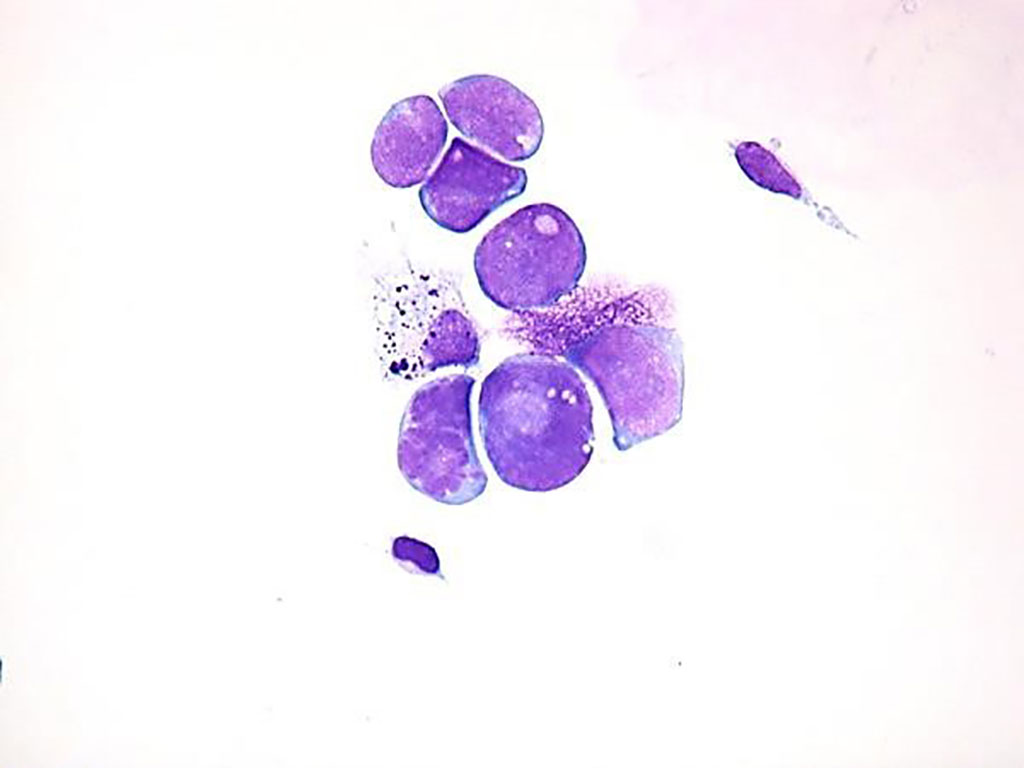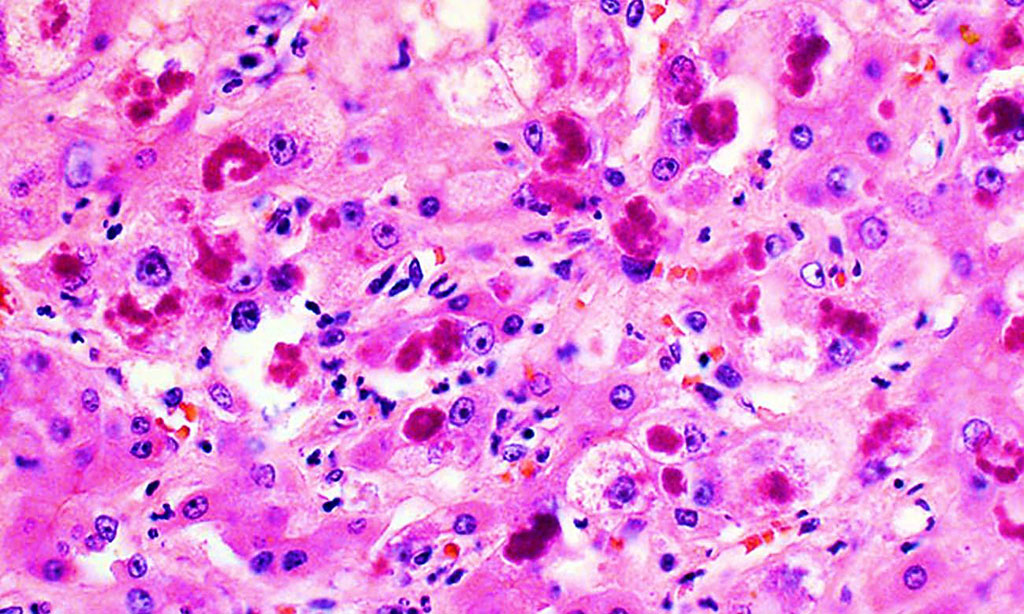Pathology

Exhaled Nitric Oxide and Eosinophil Count Diagnose Eosinophilic Asthma
Eosinophilic asthma is now recognized as an important subphenotype of asthma based on the pattern of inflammatory cellular infiltrate in the airway. Eosinophilic asthma can be associated with increased asthma severity, atopy, late-onset disease, and steroid refractoriness. More...01 Sep 2021

Leptomeningeal Disease Diagnosed Using CSF Cell-Free DNA
Leptomeningeal disease (LMD) is a devastating complication of solid and liquid systemic and central nervous system malignant neoplasms. LMD, in which cancer metastasizes to the cerebrospinal fluid, occurs in 4% to 15% of cancer patients and is associated with poor survival, with untreated patients dying within four to six weeks. More...26 Aug 2021
Biomarker p-120 Catenin Distinguishes Conventional Urothelial Carcinoma from Variants
Plasmacytoid urothelial carcinoma (PC-UC) is an infrequent and clinically aggressive variant of urothelial carcinoma (UC). Initially, PC-UC was identified based on morphology as a potential mimicker of malignant plasma cell and lymphoid neoplasms and is characterized by loss of E-cadherin (E-Cad)–mediated intercellular adhesion. More...24 Aug 2021

Novel Blood-Based Test Bolsters MRI-Based Prostate Cancer Screening
Prostate cancer does not usually cause any symptoms until the cancer has grown large enough to put pressure on the tube that carries urine from the bladder out of the penis (urethra). Symptoms of prostate cancer can include: needing to urinate more frequently, often during the night needing to rush to the toilet. More...23 Aug 2021

Key Factors Signal Infection Risk in Alcoholic Hepatitis
Alcohol-associated hepatitis (AAH) is a severe form of liver injury with mortality as high as 30%-40% at 90 days. As a result of altered immune function in AAH, bacterial infections are common and are associated with poor outcomes. More...17 Aug 2021

Genomes of Advanced Neuroendocrine Neoplasms Unveil Subtypes
Metastatic and locally-advanced neuroendocrine neoplasms (aNEN) form clinically and genetically heterogeneous malignancies, characterized by distinct prognoses based upon primary tumor localization, functionality, grade, proliferation index and diverse outcomes to treatment. More...13 Aug 2021

Multitarget Fecal Immunochemical Test Validated for Colorectal Cancer
Colorectal cancer (CRC) starts in the colon or the rectum. These cancers can also be called colon cancer or rectal cancer, depending on where they start. Colon cancer and rectal cancer are often grouped together because they have many features in common. More...08 Aug 2021
In Other News
CSF Conversion Assay Identifies Lewy Body Disease Cognitive Impairment
Minimal Residual Disease Test Predicts Oligometastatic CRC Patient Outcomes
Diagnostic Biomarker MMP-13 Explored for Cutaneous Squamous Cell Carcinoma
Immunoassays Compared for Serum HE4 Estimation for Ovarian Cancer
Preemies' Blood Type Tied to Risk for Necrotizing Enterocolitis
Telomerase Reverse Transcriptase Protein Expression Evaluated for Melanomas
Electronic Nose Sensor Accurately Detects Ovarian, Pancreatic Cancers
Protein Biomarker Helps Diagnose Pancreatic Cancer
Biomarkers Diagnose and Predict Acute Pancreatitis
Respiratory Syncytial Virus Bronchiolitis Has Different Subtypes
Hyperglycemia Evaluated as a Risk Factor in Pancreatic Cancer
Genetic Variants Associated with Unexplained Sudden Cardiac Death
CtDNA Analysis Assesses Early Relapse Detection in Colorectal Cancer
Liquid Biopsies Detect Pediatric Bone Tumors Based on Epigenetic Profiles
Genomic Differences Cause Racial Disparities in Prostate Cancer
Intraoperative Frozen Section Detect Acute Invasive Fungal Rhinosinusitis
Analytic Validation and Clinical Utilization of Comprehensive Genomic Profiling Test
Colorectal Cancer Relapse Predicted by ctDNA Clearance
Jagged Ends of Urinary Cell-Free DNA Assessed in Bladder Cancer Detection
Jagged Ends of Urinary Cell-Free DNA Assessed in Bladder Cancer Detection
Loss of Function Mutations in GEMIN5 Cause a Neurodevelopmental Disorder
Human Microbiota Flagellins Drive Adaptive Immune Responses in Crohn’s Disease
Rapid, Direct-to-Digital Prostate Biopsy Pathology Evaluated
The Pathology channel details advances in the field of Surgical Pathology and all its subspecialties, including Cytopathology and its subspecialties.











